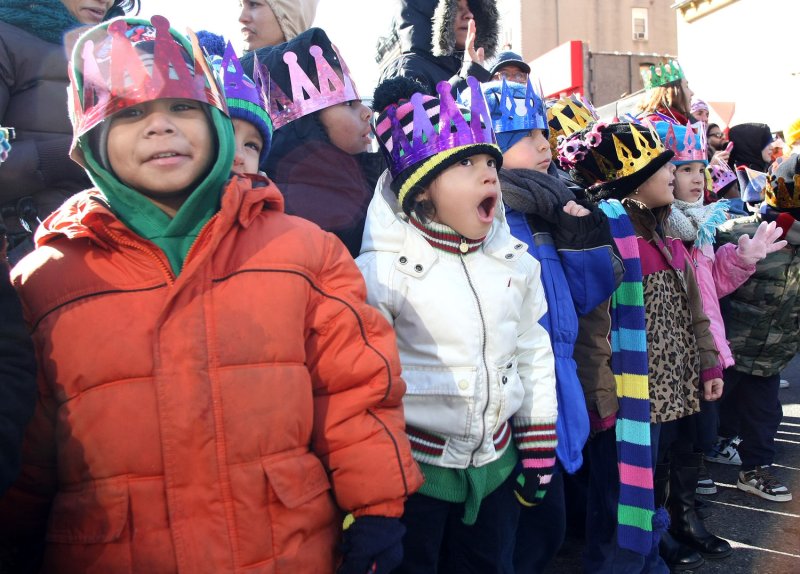Children wear paper crowns as they watch the Three Kings Parade in Harlem on January 6, 2010 in New York City. Three Kings Day, also known as Epiphany, is the last official day of the Christmas Season which celebrates the Biblical journey of the Magi who visited the baby Jesus. UPI /Monika Graff |
License Photo
WASHINGTON, Dec. 29 (UPI) -- The recession disrupted U.S. demographics, slowing growth in the Sunbelt while spurring movement to states with more jobs and cheaper housing, census data show.
The severe economic downturn that began in December 2007 and technically ended in June 2009 caused Americans to change how and where they seek new opportunities, the Los Angeles Times reported Wednesday. The question is whether traditional demographic patterns will re-emerge as the economy picks up steam.
Census data this year indicate a dramatic decrease in migration to California and Florida, while Texas led the South and West with the most population gains.
At 12 percent, Florida's unemployment rate is well above the national average of 10 percent, and it aging population continues to blunt population growth.
The overall U.S. population increased by a paltry 9.7 percent in the first decade of the 21st century, largely due to a decrease in immigration and a decline in the birthrate, both effects of the lingering economic slump.
Affordable housing and a pro-business legislative climate caused a population surge in Texas, which grew by 21 percent in the decade.
"I see people selling their shacks in California and buying homes three times as big here," Laura McGuire, who runs a home healthcare business in San Antonio, told the Times. Unemployment in the Lone Star State is an enviable 8.2 percent, while California remains stuck above 12 percent.















